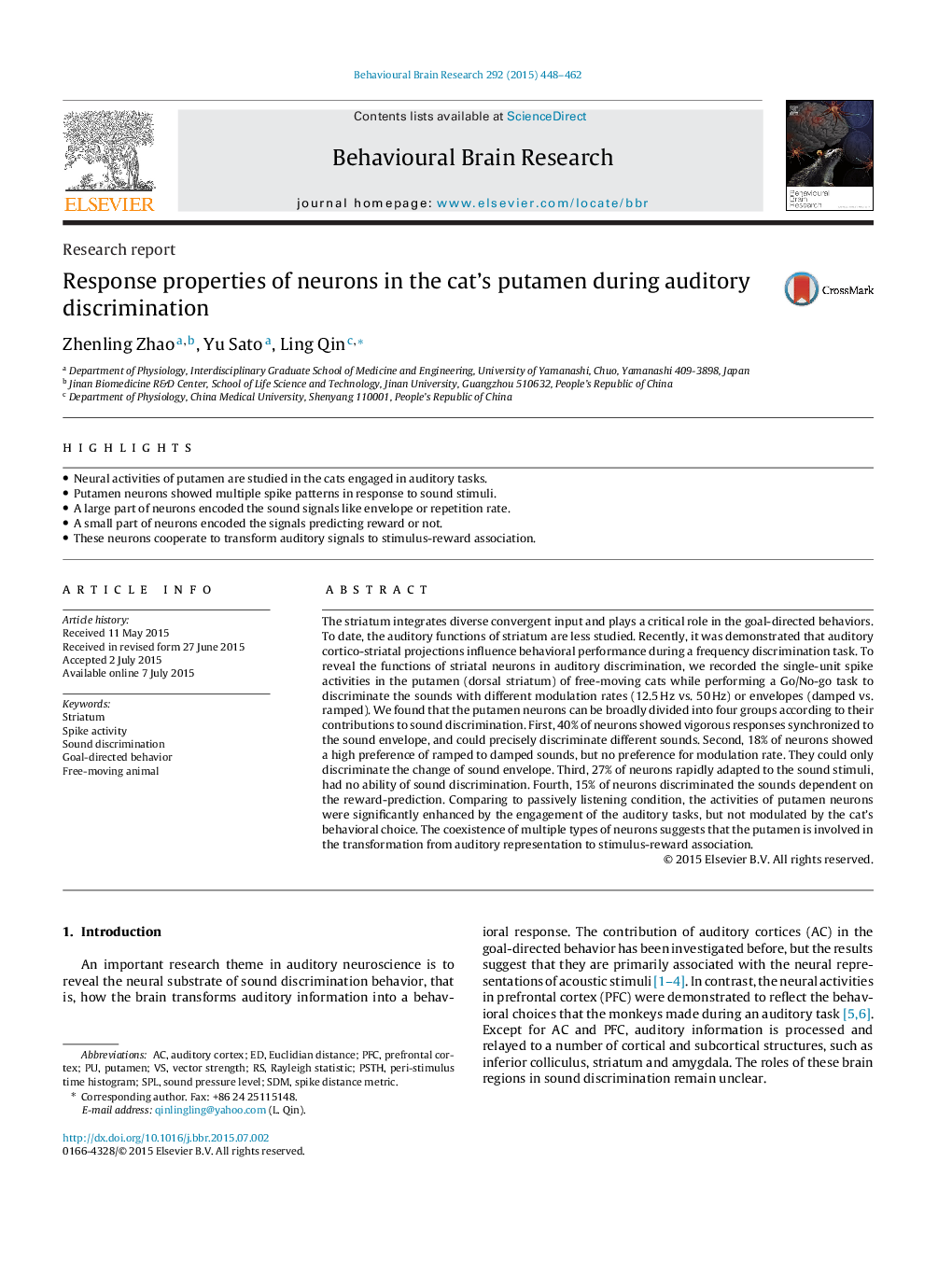| Article ID | Journal | Published Year | Pages | File Type |
|---|---|---|---|---|
| 6256542 | Behavioural Brain Research | 2015 | 15 Pages |
â¢Neural activities of putamen are studied in the cats engaged in auditory tasks.â¢Putamen neurons showed multiple spike patterns in response to sound stimuli.â¢A large part of neurons encoded the sound signals like envelope or repetition rate.â¢A small part of neurons encoded the signals predicting reward or not.â¢These neurons cooperate to transform auditory signals to stimulus-reward association.
The striatum integrates diverse convergent input and plays a critical role in the goal-directed behaviors. To date, the auditory functions of striatum are less studied. Recently, it was demonstrated that auditory cortico-striatal projections influence behavioral performance during a frequency discrimination task. To reveal the functions of striatal neurons in auditory discrimination, we recorded the single-unit spike activities in the putamen (dorsal striatum) of free-moving cats while performing a Go/No-go task to discriminate the sounds with different modulation rates (12.5Â Hz vs. 50Â Hz) or envelopes (damped vs. ramped). We found that the putamen neurons can be broadly divided into four groups according to their contributions to sound discrimination. First, 40% of neurons showed vigorous responses synchronized to the sound envelope, and could precisely discriminate different sounds. Second, 18% of neurons showed a high preference of ramped to damped sounds, but no preference for modulation rate. They could only discriminate the change of sound envelope. Third, 27% of neurons rapidly adapted to the sound stimuli, had no ability of sound discrimination. Fourth, 15% of neurons discriminated the sounds dependent on the reward-prediction. Comparing to passively listening condition, the activities of putamen neurons were significantly enhanced by the engagement of the auditory tasks, but not modulated by the cat's behavioral choice. The coexistence of multiple types of neurons suggests that the putamen is involved in the transformation from auditory representation to stimulus-reward association.
